|
It has been said that "there are no rules" when it comes to mixing music in surround. Opinions still vary as to how much (if at all) the sub and center channels are utilized. There are no standards on delivery formats (audio files on hard drives, CD-Rs or DVD-Rs; Genex MO; DA-88 or 98HR tapes; or 8-track 1- or 2-inch analog) or even how the monitor speakers should be set up in the control room (ITU standard or quad equidistant). Surround signal processing and methods differ significantly from stereo with a general consensus emerging: For surround sound mixing, with higher resolution and six channels to play music over, there is less need to process individual tracks or the mix buses like stereo, so everything fits down a 2-channel pipe. As liberating as this might seem, this quantum leap in sonics and mixing options is not without caveats: Each individual track's sound quality; the cohesiveness and detail of the overall mix; reverb and delay setup and use, and the quality assurance of the final encoding process are critical for the best surround sound. Mix talked to eight professional surround engineer/producers about signal processing in surround. Here's what they had to say.
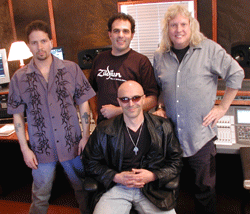
|
Michael Wagener, based at his own WireWorld Studios in Nashville, is well-known as a rock producer who has worked with Ozzy Osbourne, Metallica, Dokken, Skid Row, Mötley Crüe and Alice Cooper. His latest surround project is with the band LeRoi. |
|
Jimmy Douglass is a New York-based producer/engineer who has worked with Aaliyah, Ginuwine, Jay-Z, Justin Timberlake, N.E.R.D., Missy Elliott, Foreigner and Slave. Recent 5.1 mixing projects include Missy Elliott and Marvin Gaye's Sexual Healing. |
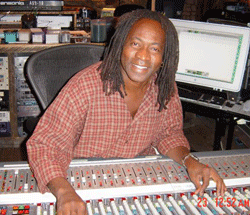
|
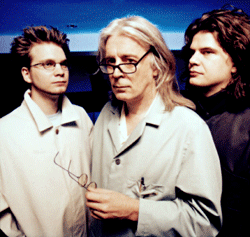
|
Mack has worked with Queen, Led Zeppelin, Deep Purple, the Rolling Stones and Black Sabbath. With his Nightjar LLC and from his unique private studio in California, he, along with his sons Julian and Felix, have completed 5.1 mixes for Billy Squier, Sparks, Freddie Mercury and for a whole series of animation features for Pioneer Entertainment. |
|
Ken Caillat and partner Claus Trelby produced Christine McVie's new solo album in both stereo and 5.1 for Warner Records. Caillat produced Rumours and four other albums for McVie and Fleetwood Mac. In 1997, Caillat founded 5.1 Entertainment and has mixed more than 200 songs in surround for artists such as Billy Idol, Frank Sinatra, Pat Benatar, the Beach Boys and Fleetwood Mac. He and Trelby are now partners in a new company. |
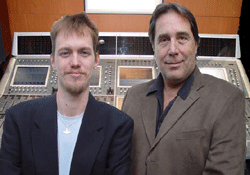
|

|
With his Le Mobile remote recording truck, Guy Charbonneau has recorded Tom Petty, Aerosmith, Faith Hill and Herbie Hancock...and that's just in 2002! |
|
Steve Parr and partner Sharon Rose specialize in music-to-picture from their Hear No Evil studio in London. Parr is vice-chairman of the Music Producers' Guild and has long been a pioneer of surround in the UK. Recent projects include the movie The Lost World and the popular TV drama CSI, as well as 6.1 club remixes for Studio Voodoo and LTJ Bukem. He recently completed recording and mixing The Lost Prince. |

|

|
Rich Tozzoli has more than 20 home-theater DVD titles to his mixing/production credit, including David Bowie, Average White Band and Blue Öyster Cult. He is one of three partners at 333 Entertainment, a media creation and production company based in New York City. |
|
Rogers Masson has worked with Reeves Gabrels, the upcoming Crickets album (with Eric Clapton and others) and on Ken Burns Jazz, and he recently finished mixing the documentary-style "The Death Parade" section of Marilyn Manson's self-produced Guns, God and Government DVD. |
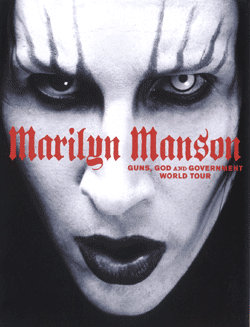
|
|
Which multitrack formats do you prefer, what do you mix on, and what is your delivery format?
Wagener: I use a Euphonix R-1 and two Sony DMX-R100 consoles. I mix to a Tascam DA-98HR at 24-bit/48 kHz. If we go SACD, then I'll use a Genex.
Masson: Pro Tools|HD 24-bit/48 kHz-96 kHz and mix using a Pro Control. I like to deliver PT stems via hard drive or DA-98HR.
Douglass: For tracking on Missy's album, I used 30 ips +9 dB, 24-track analog with 90 percent of the vocals on Pro Tools. I mixed on a Neve VR with Flying Faders and used a Tascam DA-88 for delivery. For Marvin Gaye's record, Sony also had me mix to a Genex, and, at the same time, I also mixed back into Pro Tools, DA-88 and a 1-inch analog 8-track.
Tozzoli: BÖC was a 32-channel 24-bit/48kHz digital DTRS mobile truck recording that we transferred to Pro Tools|HD and locked to a down-converted copy of the high-definition video. I mix using a Pro Control while watching picture, and we prefer to deliver encoded masters to authoring.
Charbonneau: Studer DASH 48-track for tracking, Pro Tools for the 6-channel mixes and editing, and a DA-98HR backup...all at 24-bit/48 kHz. Bob Ludwig ended up using the DA-98HR tape in mastering.
Caillat: I use Steinberg's Nuendo and mix on a Yamaha DM2000 console. We deliver our mixes as files on DVDs using Minnetonka's software. Warners does the MLP encoding and adds their watermark.
Mack: I'd prefer analog multitracks as source, but I get everything and move it all to my DAW. I use Logic as a front end to Pro Tools|HD hardware and mix using the Logic Control controller. I mix on Tannoy System 1000A speakers and like to deliver audio files to authoring on hard drives, but I have a DA-98HR if required.
Parr: On The Lost Prince, I used Pro Tools|HD at 24-bit/44.1 kHz using Digital Performer 3.1 as a front end for the recordings at The Forum in Rome, and Pro Tools MIXPlus at Radio Slovak in Bratislava. I mix here at home on an analog Euphonix CS2000 into another DP system with a MOTU 24/96 interface. This was so that there would be no sample rate conversion for DVD-A. |
|
Were there any special technical problems that you had to overcome? What equipment or software did you use?
Wagener: I do hard rock and heavy metal, and this is my first production in surround from the ground up. In this music genre, frequency-wise, there is a lot of "bunching up" in the upper midrange from guitars, vocals, even the attack of the bass. With surround, there is much more room to spread everything out, and I'm very proud to say that I used no EQ in the recording.
Masson: For parts of the section I mixed for Marilyn's DVD, some of the audio came in from the mics of the five DV cameras he gave out. The sound quality from those mics was horrible, but sometimes Marilyn wanted to use it to disorient the listener. I used the Waves Renaissance parametrics and Restoration X bundle to filter and EQ when the noise and rumble were not acceptable. The other main task was to match the main concert footage that Jimbo Barton mixed...brilliantly, I might add.
Douglass: Since I recorded and mixed the original Missy album bottom to top, I didn't have to walk in the footsteps of somebody else...figure out what another mixer did. I recalled my original stereo mix and broke it out to surround and took it from there.
Caillat: Well, I've had every experience imaginable with regard to problematic source audio! With my surround mixes of the Fleetwood Mac album [the one before Rumours], there wasn't much to do except finding the right 24-track Dolby A masters. With surround reissues, I transfer the multitracks to digital and also lay down the original stereo mix in sync for comparison. My intention is to create a 5.1 mix that is faithful to the original feeling of the stereo mix by copying the reverbs and other effects. |
|
Can you talk about your approach to signal processing of individual tracks or special tricks when mixing in surround?
Wagener: I started with the recording and used a binaural head for acoustic instruments and guitar recording along with my main mics. I plan to try putting these tracks in the rear channels or opposite the main mic's panned position. I also used the Soundfield MKV microphone for the drums.
Douglass: You don't have to squash everything into the same small area as in stereo. There is no fighting for space in surround, so I end up using less EQ and compression on individual tracks.
Tozzoli: I use a lot less compression and EQ, but reverb takes on a whole new life. We have found that for home-theater mixing, we print the surround channels 3 dB louder, as consumers seem to want to hear those surrounds. We also find that people tend to sit closer to the front speakers or that the surrounds are mounted far and out of the way.
Charbonneau: I mixed the entire Clint Holmes album in stereo first, by recording stereo stems of drums, guitars, vocals, keys, etc. on my second 48-track Studer DASH machine. For Disturbed, I mixed the stereo stems to my Studer analog 15 ips Dolby SR instead. All of my mix moves and processing were done at that time and combined into a stereo mix. The surround mix was created from those stems, but the mixdown machine was locked to the multitrack master so I could use room tracks and spotlight instruments around the speakers for the surround version.
Caillat: I use less processing in surround. You don't have a choice in stereo: You force everything into that left/right soundfield by selectively boosting or attenuating certain frequencies to enhance those instruments. It is almost the opposite when working within the surround sound field. For example, acoustic guitars in stereo usually require rolling off bottom end, adding high end then compressing; in effect, making the guitar smaller. But in surround, I'll make it bigger to cover the huge space I have now.
Parr:
The Lost Prince was all orchestral recording with no added electronics, and I didn't go overboard with outboard. I did place omnis in each corner of the room and made good use of them in the surround mix. |
|
What type of 6-bus processing do you like to use?
Wagener: Since there is no EQ yet on this record, I'll be using the TC System 6000 for 6-channel EQ and also a little brick-wall limiting to avoid excessive peaks. Other than that, I'll try to keep it very open with very little processing.
Masson: Since I had to match already-mixed concert sound, source material from Marilyn's stereo album and live stage sound with Eminem, I used Waves Renaissance for EQ and compression and the TC 6000's Unwrap program to repurpose the album cuts. I know there is some controversy, but I am a big fan of Unwrap in certain situations. The 6000 is one of my 'go-to' pieces for reverb, EQ and bus limiting.
Tozzoli: Most multichannel home-theater projects that we mix do not undergo the mastering step, so we get around this by using the TC 6000 or the Waves L360 bundle across the buses. That'll jump the level up and control peaks.
Caillat: The TC 6000 is a great box, but I'm not convinced; too easy: Push a button and it's louder. With Rumours, I didn't compress it at all. There were so many transients on the instruments, I didn't want to sit on them. At mastering, Bob Ludwig tried peak limiting, but I felt it messed with the arrangement, feeling and impact of some of the songs.
Mack: Here I am a purist person, I hardly ever use anything across the output buses. That is best left to a good mastering engineer who has the highest- quality tools. I keep it as clear and punchy as possible.
Parr: The Euphonix had the ability to gang dynamics and EQs together before anything else, and when I first started mixing in 5.1, I made good use of this capability. However, lately I find myself using less and less. I'm currently working on club tracks for DTS in 6.1, and I gang three Euphonix CS108 compressors across the front and three across the back. |
|
Please talk about using reverb and delays when mixing surround.
Wagener: Reverb and artificial rooms are most important in surround, and I'll use the TC 6000 and the Kurzweil KSP8 both have 5.1 reverbs and I am going to try an Elliot Scheiner trick of using a mono plate in each speaker so each instrument in that channel has a reverb available right on top of it with the ability to send to other channel reverbs at the same time.
Masson: For most stuff, I use plates and short delays: Waves, Kind of Loud and Lexicon plug-ins. For live concert performances, I use the classic audience POV with ambiences in the rear, changing the size and front to back delays according to the specifics of the particular performance space.
Tozzoli: My main reverb is the Sony DRES777, the "Concertgebouw" preset that's a quad setup that sends your mix into a concert hall. I like plates from the TC 6000, Eventide Orville's "Church" settings and the rooms in the Lexicon 960L. Kind of Loud's RealVerb 5.1 and Waves 360 reverb are great. Good-sounding reverbs are such an important part of surround mixing because they shine through so well.
Charbonneau: I use mostly the four to six room tracks I always record for ambience. I put two AKG 460s pointed at the singer placed eight to 10 feet high behind the backline and pointed at the singer onstage. And then I put a pair of Sennheiser 416s out front, outside of the P.A. columns, and then another pair of AKG C 451 Es (CK-2 omni capsules) back at the FOH mixer position.
Caillat: I use two stereo chambers from the TC 3000: one for front L/R and one for rear L/R with sends for each. A center-panned vocal track would get some of both of these reverbs. As far as effects, it is whatever the music calls for: I'll pre-delay reverbs to impart motion to the reverb; an instrument could hit in front of you; and the delay/reverb could come from behind you.
Mack: My reverb and delay usage is very song-specific, but generally what seems to work well most of the time are very short delays in the 10 to 30ms range. You can crisscross them to pull something into a certain corner or make them appear to come from behind a speaker. I have a huge setup of outboard gear and effects all ready to use that is double the size I'll need. That way, I can try this or that quickly and avoid having to stop in the middle of mixing to have something patched in!
Parr: I actually like my old Lexicon 224X and PCM80. Certain algorithms have four outputs, with the extra pair having more of an early-reflection characteristic. I use these for the rear channels and bleed a little of the 224's A and C outputs to the center. This, then, becomes my basic soundfield into which I can feed individual sources. If I have something toward the rear, I'll probably have a short plate toward the front and vice versa...same with the sides. On Lost Prince, I really let the acoustics of the recording rooms do the work for me and used no delays at all. |
|
How do you use and check the center and .1 sub channels?
Wagener: I use the sub for a little bit of bass and kick and for LeRoi's record, we'll have sound effects like heartbeats that belong in the sub. The center channel is going to be treated equal to the other four.
Masson: I use the center channel and a good portion of the vocal is there as well as the left and right channels...never a phantom center only. A little kick and bass in the sub. The sub is another tool and an integral part of the mix...I want to hear it big-time.
Douglass: I turn off the sub altogether because it affects the way I mix and throws off my perception of the big picture. It's the difference between mixing on my five Yamaha NS10Ms and then going to a club and hearing my mix on those systems; hard to hear detail and not mixing on nearfields. With the sub channel on, I'm mixing in that club. I use the center speaker way differently than other guys. For example, I'll have four stereo keyboards: one across the front, one across the back, one across the middle (left and right panned and midway between front and back) and now, to distinguish that fourth keyboard from the others, I'll put it only in the center speaker. I never use the center for vocals...it sounds strange to me...not what I am used to hearing.
Tozzoli: I make sure anything in the center is also in the left and right mixed almost equally: 50/50. About 80% of the mix is still carried by the other speakers. For the sub channel on Blue Öyster Cult, it was important to carry the sound of the PA system along with the kick and bass and I use Kind Of Loud's Woofie™ to check to see what bass management will roughly do to my mix.
Charbonneau: Sure I use the center channel but I make sure that with a vocal also in the center, there is only a small increase of vocal presence with it on. If you put the vocal only in the center and that channel doesn't work correctly in the listener's living room, you've got a karaoke mix! For the sub channel, I filter and use dbx's 120x sub harmonic generator.
Caillat: The sub gives you another octave and more space for the upper frequencies. I send some kick, bass and a little snare drum and filter starting at 100Hz and clamp (compress) the sub channel buss. I'll put about 30% of the vocal in the center speaker and the rest phantom. Even though you might be sitting in front of the left speaker, you'll still hear the vocal coming from the center. When I'm nearly finished with a mix, I always go around and solo each channel to see exactly what it sounds like on it's own...the center channel is my main concern...I don't want to leave my artist 'hanging out to dry' so I'll nudge some of the vocal L/R reverb returns toward the center channel.
Mack: Because not all bass management systems are not equal, it sounds better to put some low frequency information in the sub channel than not. I also use the center channel a little to anchor the phantom center from the front left and right speakers. I use a Studio Technologies Model 78 Central Controller with channel solos and down mix buttons for up to 7.1 channels. You can solo or mute any channel including the sub and also alter individual channels levels.
Parr: I really believe that there is no place for the LFE in orchestral cinema mixes. Cinema speakers are full range and you can open up your mixes to extreme abuse if you put stuff down there. Home systems (via bass management) will redirect so you shouldn't go there. The use of the center is a big issue and I mix to the dialogue tracks and keep out of the way. Otherwise I will place solo instruments in there, but always with some divergence in the left and right so that nothing is naked. |
|
What equipment do you use to check your mixes outside the studio?
Wagener: I make a DTS encoded CD for playback at home. I have a standard stock home system with bass management turned on to check my mixes.
Douglass: After mastering but before manufacturing, at home I use a Coleman Audio passive level controller/switcher and check a DVD ref on my NHT Pro speakers. It has got to represent what I did in the studio.
Tozzoli: We check everything (before mastering or authoring) by sending a digital feed of a hardware-encoded DTS or AC-3 stream from my mix room to another listening room at 333 and decode it on a typical home theatre setup with bass management. We also use Kind of Loud's SmartCode Pro™, do a AC-3 encode of three songs, and burn with a MAC G4's SuperDrive™, a DVD-V (with AC-3 audio only) and check it at home.
Charbonneau: While mixing Clint Holmes album, we set up a surround playback system of JBL's LSR speakers in Clint's dressing room and ran six audio channels so he could listen in. We did a lot of A/Bing other DVD releases that were originally recorded in my truck but mixed elsewhere. For Disturbed's DVD, I provided Dave May (DVD producer) with some discrete mixes recorded on DA-88 16-bits. He listened to them at the Dolby lab reference room and at Warner Bros. records listening room. We found them to translate very well.
Mack: I used to go down to the local hi-fi/stereo shop and play my stuff on all their systems but now I have three surround systems to check DVDs. My $300 Panasonic system is pretty good because it exhibits a lot of things that you don't hear in the studio.
Parr: I have a jury-rigged system in my live room which is all my old NS10s and some hi-fi shop crap but it's great for worst-case scenarios. It tells me loads.
|
|
Do you do AC-3 encoding and do you like hardware or software encoders?
Wagener: At this stage, we're not sure of the final release format...could be DVD-V or DTS. I would hire and work closely with professionals doing mastering and AC-3 encoding and check the results.
Masson: Only for reference discs...but I prefer the hardware Dolby unit over software encoders and I use the default first choice setting.
Caillat: At 5.1 Entertainment we had both the Dolby and DTS encoder boxes. I like the hardware units for the simple reason that you can A/B input vs. output and adjust the mix to compensate for whatever the encoder is doing to it. I always set the encoder to default to the surround mix. We tried to make the default to the stereo mix on Rumors DVD and some older Dolby receivers (we found) couldn't find it on the disc! The only choice was the stereo down mix and that is a whole other thing...you have to adjust the surround mix for the way it gets folded down to stereo. If your DVD player defaults to stereo, the Dolby Pro Logic circuit will throw audio to the rear channels and for a lot of consumers, they'll think that is the surround mix...they'll won't even know!
Mack: I use Apple's DVD Studio Pro for reference discs because it allows you to set parameters like normalization or rear channels down 3dB for down mix reasons. There are six or seven different compression choices. I try encoding using all the different settings to see what works best for the particular music and the mix I'm doing...heavy guitar production reacts differently than a piano-based song. I burn a DVD and listen to the results, including the fold down on my three 5.1 home theater systems and make notes of what I like. I give the settings to the authoring house doing the final AC-3 encode. The disc can also be sent to the producers so they can approve mixes.
|
Barry Rudolph is an L.A.-based recording engineer. Visit his Web site at:
WWW.BARRYRUDOLPH.COM
 Click Here To Return To The Mix Directory Click Here To Return To The Mix Directory
This Review Is Copyright © 2003 Through
By Future Plc, an international media group and leading digital publisher. All Rights Reserved.
All Web Page Design Is Copyright © 2003 through By Barry Rudolph
|
